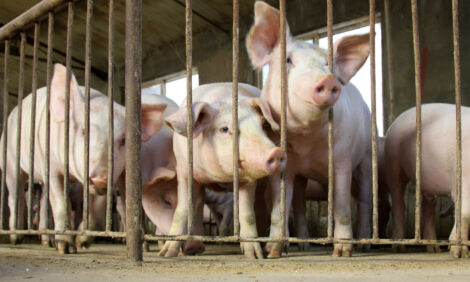



Feed Efficiency Stressed at Producer Workshop
US - Iowa State University Extension's swine field specialist, Dave Stender, has emphasised the importance of feed efficiency July 28th during a Land Stewardship Project workshop at the St. Charles Community Center.Agri News tells us that a study he was involved with looked at 41 farrow-to-finish farms. These farms were in niche production and incorporated pen farrowing, a bedded system, gave hogs outdoor access and used antibiotics only to treat sick animals, which were then not eligible for the study. Herd sizes ranged between 10 sows to 600 sows.
The study's data showed size is not a factor for profit; there was no relationship between sow herd size and the producers' cost of production. The top 15 herds produced less pounds of pork for more money than the bottom 15 herds.
The top three profit drivers were hours of labor per hundredweight, operating cost per hundredweight and feed efficiency.
But Stender said that with feed prices being significantly higher today, feed efficiency is the current top profit driver.
Producers can't assume high production numbers will result in a profit, Stender said. The most productive herd in the study had 17.8 pigs per sow per year and ranked as the 11th most profitable farm.
Successful herds had a low cost structure with good performance.
There are many factors to consider when looking at feed efficiency, but Stender noted the top factor in the study was feeders. It's important to know if pigs aren't using feeders effectively and to avoid feed dropping to the floor, where it won't be eaten.
"Pigs are notorious feed wasters," Stender said.
With a high corn price, feeding sows correctly is also important. Keeping sows in thin working condition can be a critical component to deal with high feed costs in niche herds, he said.
It's a good idea to stick to feed fundamentals and limit the feed available in troughs in order to minimize how much is wasted. It's not unusual that feed wastage is more than 10 percent on swine farms. Stender said it's a good practice to be able to see 67 percent to 75 percent of the bottom of the feed trough.
Other topics during the workshop covered exploring feed alternatives to corn and soybeans, a discussion panel with sustainable hog farmers, organic hog production and retrofitting hardware from a conventional barn to be used in a natural farrowing system.







